
Track details
Distance
21.5km
Duration
5h 15min
Ascent
467m
Descent
505m
Starting altitude
163m
Arrival altitude
126m
Lowest point
120m
Highest point
296m
LA GUTULA hostel
In the center of Bagnone, a renovated residence with double, triple and quadruple rooms
LA GUTULA hostel
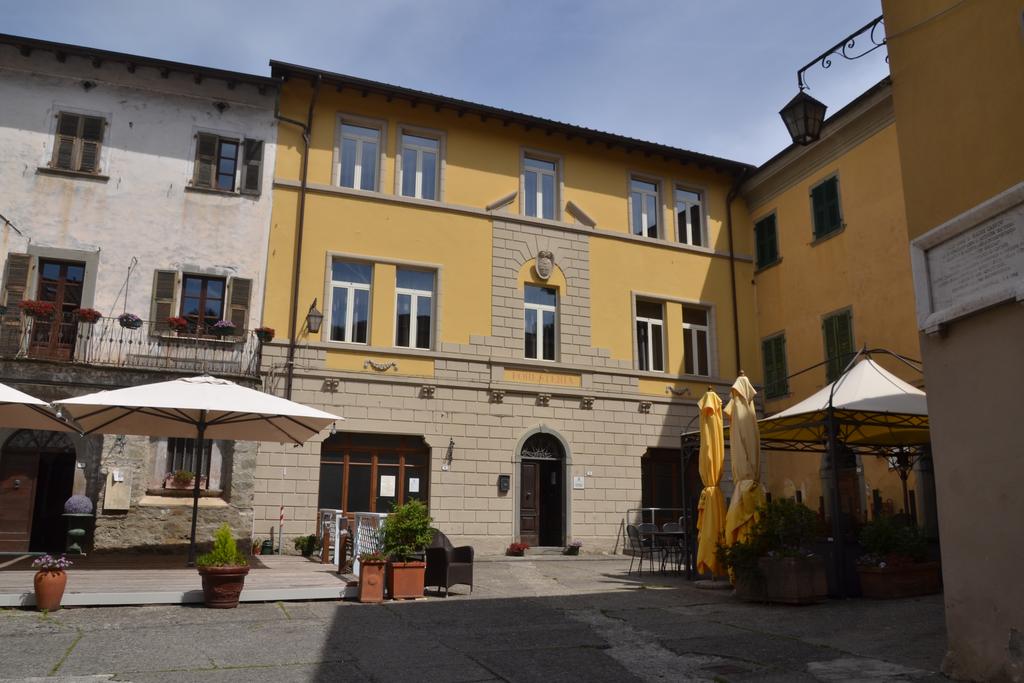
In the center of Bagnone, a renovated residence with double, triple and quadruple rooms
Bagnone
Its territory is essentially extending over mountains, on the Apennines side, being Monte Sillara (1891mt) the highest peak. The village sits on top of a rocky promontory, surrounded by oaks, chestnuts and pine forests.
Bagnone gained its importance thanks to its strategic importance, at the crossing of several roads merging to the valley from mountain passes
Bagnone
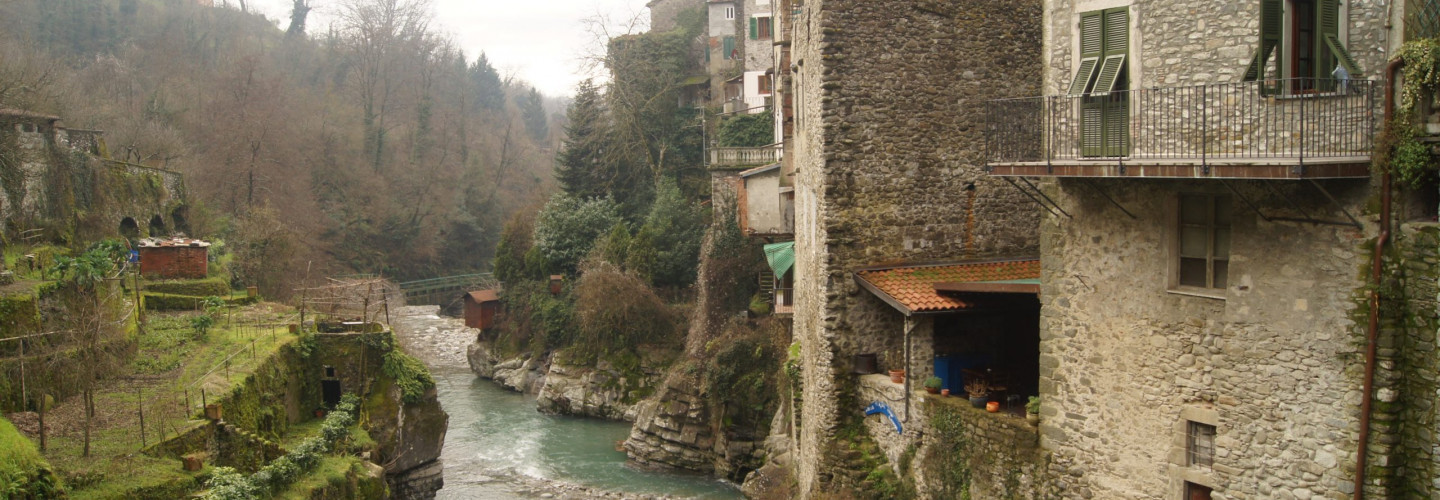
Its territory is essentially extending over mountains, on the Apennines side, being Monte Sillara (1891mt) the highest peak. The village sits on top of a rocky promontory, surrounded by oaks, chestnuts and pine forests.
Bagnone gained its importance thanks to its strategic importance, at the crossing of several roads merging to the valley from mountain passes
Filattiera
The name of the capital, deriving from the term Fulacterion, with which the Byzantines indicated the fortifications placed at the barrier of strategic points of great importance, clearly indicates its origin over time and its structural characteristics.
The village of Filattiera preserves the first settlement of the thirteenth century intact, with the Castrense church of San Giorgio and the watchtower and, perfectly legible, the development of the village of the following centuries with the Malaspinian castle, the church, the ancient hospital of San Giacomo.
Filattiera

The name of the capital, deriving from the term Fulacterion, with which the Byzantines indicated the fortifications placed at the barrier of strategic points of great importance, clearly indicates its origin over time and its structural characteristics.
The village of Filattiera preserves the first settlement of the thirteenth century intact, with the Castrense church of San Giorgio and the watchtower and, perfectly legible, the development of the village of the following centuries with the Malaspinian castle, the church, the ancient hospital of San Giacomo.
Filetto
Its origins are linked along VI-VII centuries to the struggle between Byzantines and Longubards: at that time a defensive line was organized on bizantines’ side in order to protect Luni harbourand prevent invasions from the Appenines side. Filetto was part of this defensive line
Filetto
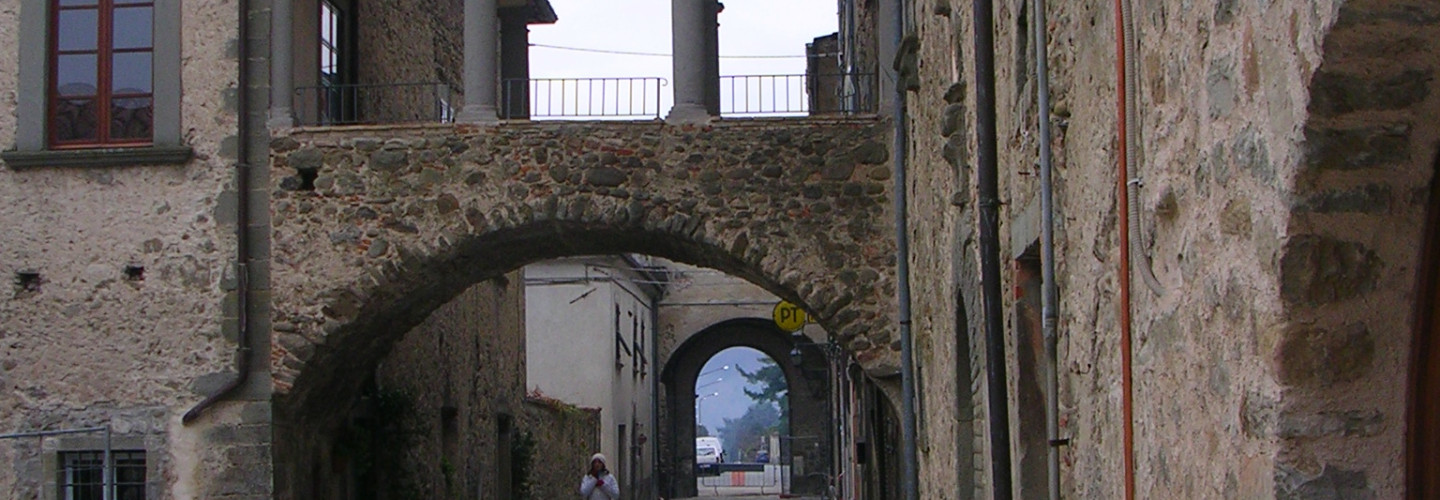
Its origins are linked along VI-VII centuries to the struggle between Byzantines and Longubards: at that time a defensive line was organized on bizantines’ side in order to protect Luni harbourand prevent invasions from the Appenines side. Filetto was part of this defensive line
Pieve di Sorano
The parish church of Santo Stefano di Sorano in Filattiera is one of the most important Romanesque parishes in the province of Massa Carrara. It rises in a strategic area, frequented since prehistoric times (seven stele statues have been found in the area) and still preserves the plant of the XII century, a Romanesque architectural masterpiece, with an imposing apsidal system entirely made of rough-hewn sandstone pebbles. Inside the entirely restored parish church, numerous medieval elements are preserved as well as two original stele statues (Sorano I and Sorano V).
The area where the church stands is frequented since prehistoric times, as evidenced by the 7 stele statues found in the surrounding area and the numerous finds from the Iron Age. After the Roman phase, testified by the presence of a “mansio” recently investigated archaeologically, Filattiera was an important Byzantine military settlement. Before the current parish church there must have been another early medieval church (VIII-IX century) from which the Epigraph of Leodegar (752 AD) today in the church of San Giorgio inside the village.
The Romanesque parish church was built between the 11th and 12th centuries as part of the ecclesiasitic reorganization of the Diocese of Luni, of which this church is perhaps the most important dependence in Lunigiana. The Pieve di S. Stefano di Sorano has been mentioned since the 11th century in all the main documents related to the Diocese of Luni and experiences its heyday until the 14th century, when it begins to be abandoned and is gradually transformed into a cemetery chapel .
The current appearance is the result of a large restoration completed in 2000, which has restored the original appearance. The whole building is made with a very particular technique, with river pebbles not squared and put in place with abundant mortar.
The plan is a basilica with three naves, without a transept, with the central nave larger than the other two and the slightly raised presbytery. On the facade you can see the polylobed rose window and some buffered openings in the masonry. In the left internal counter-facade, in the corner, the stele statues Sorano I and Sorano V, found in the area of the church: Sorano V was reused as an architrave of a small entrance open on the facade and then buffered.
The interior is sober, severe, not very bright, with large double-ring arches resting on round pillars with very short engraved capitals. On the left side there are some eighteenth-century masonry arches inserted between the Romanesque ones.
The decoration and symbols are reduced to a minimum, however there are some interesting images, in particular the monstrous figure present in the upper part of the central nave, on the left side.
The most interesting architectural part of the church from the point are certainly the three apses, built with an architectural decoration on different levels of depth. In the upper part of the main apse you can see traces of some small figured half-capitals.
The bell tower, perhaps born as a defensive structure, is connected to the church but represents an element in its own right.
A few meters from the parish church, heading north, there is the Sorano Didactic Center, home to an area equipped for excavation exercises, didactic archeology lessons, conferences and conventions.
[Source: turismoinlunigiana.it]Pieve di Sorano
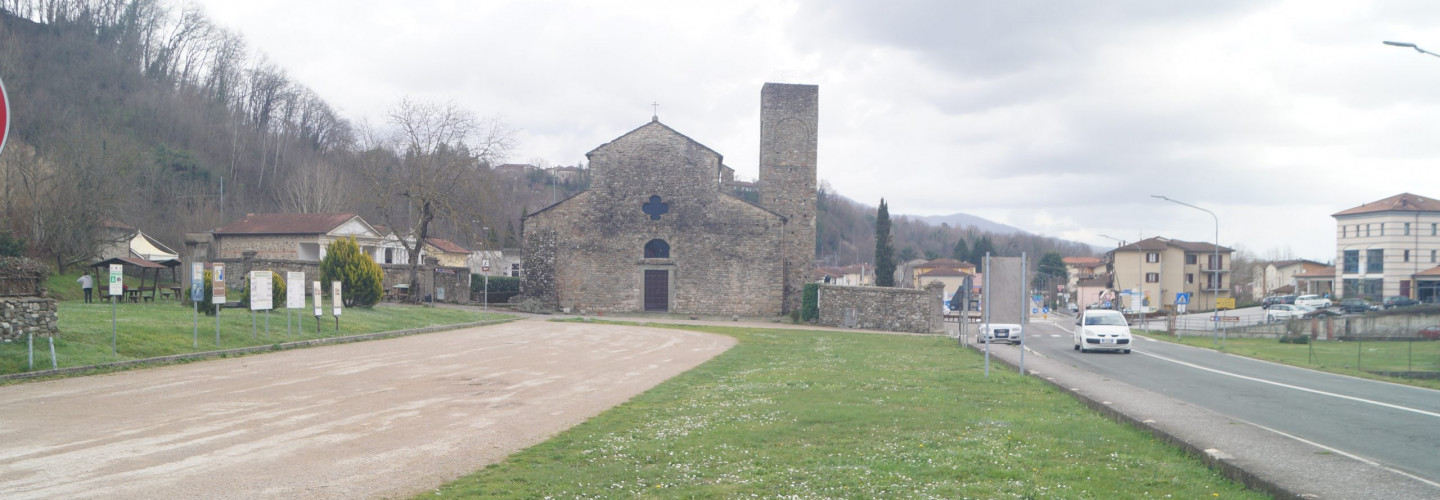
The parish church of Santo Stefano di Sorano in Filattiera is one of the most important Romanesque parishes in the province of Massa Carrara. It rises in a strategic area, frequented since prehistoric times (seven stele statues have been found in the area) and still preserves the plant of the XII century, a Romanesque architectural masterpiece, with an imposing apsidal system entirely made of rough-hewn sandstone pebbles. Inside the entirely restored parish church, numerous medieval elements are preserved as well as two original stele statues (Sorano I and Sorano V).
The area where the church stands is frequented since prehistoric times, as evidenced by the 7 stele statues found in the surrounding area and the numerous finds from the Iron Age. After the Roman phase, testified by the presence of a “mansio” recently investigated archaeologically, Filattiera was an important Byzantine military settlement. Before the current parish church there must have been another early medieval church (VIII-IX century) from which the Epigraph of Leodegar (752 AD) today in the church of San Giorgio inside the village.
The Romanesque parish church was built between the 11th and 12th centuries as part of the ecclesiasitic reorganization of the Diocese of Luni, of which this church is perhaps the most important dependence in Lunigiana. The Pieve di S. Stefano di Sorano has been mentioned since the 11th century in all the main documents related to the Diocese of Luni and experiences its heyday until the 14th century, when it begins to be abandoned and is gradually transformed into a cemetery chapel .
The current appearance is the result of a large restoration completed in 2000, which has restored the original appearance. The whole building is made with a very particular technique, with river pebbles not squared and put in place with abundant mortar.
The plan is a basilica with three naves, without a transept, with the central nave larger than the other two and the slightly raised presbytery. On the facade you can see the polylobed rose window and some buffered openings in the masonry. In the left internal counter-facade, in the corner, the stele statues Sorano I and Sorano V, found in the area of the church: Sorano V was reused as an architrave of a small entrance open on the facade and then buffered.
The interior is sober, severe, not very bright, with large double-ring arches resting on round pillars with very short engraved capitals. On the left side there are some eighteenth-century masonry arches inserted between the Romanesque ones.
The decoration and symbols are reduced to a minimum, however there are some interesting images, in particular the monstrous figure present in the upper part of the central nave, on the left side.
The most interesting architectural part of the church from the point are certainly the three apses, built with an architectural decoration on different levels of depth. In the upper part of the main apse you can see traces of some small figured half-capitals.
The bell tower, perhaps born as a defensive structure, is connected to the church but represents an element in its own right.
A few meters from the parish church, heading north, there is the Sorano Didactic Center, home to an area equipped for excavation exercises, didactic archeology lessons, conferences and conventions.
[Source: turismoinlunigiana.it]Villafranca Lunigiana
Its origin is around XII century thanks to the increasing importance of the “monte Bardone way” else “Via Francigena”
[From www.terredilunigiana.com ]
Villafranca Lunigiana
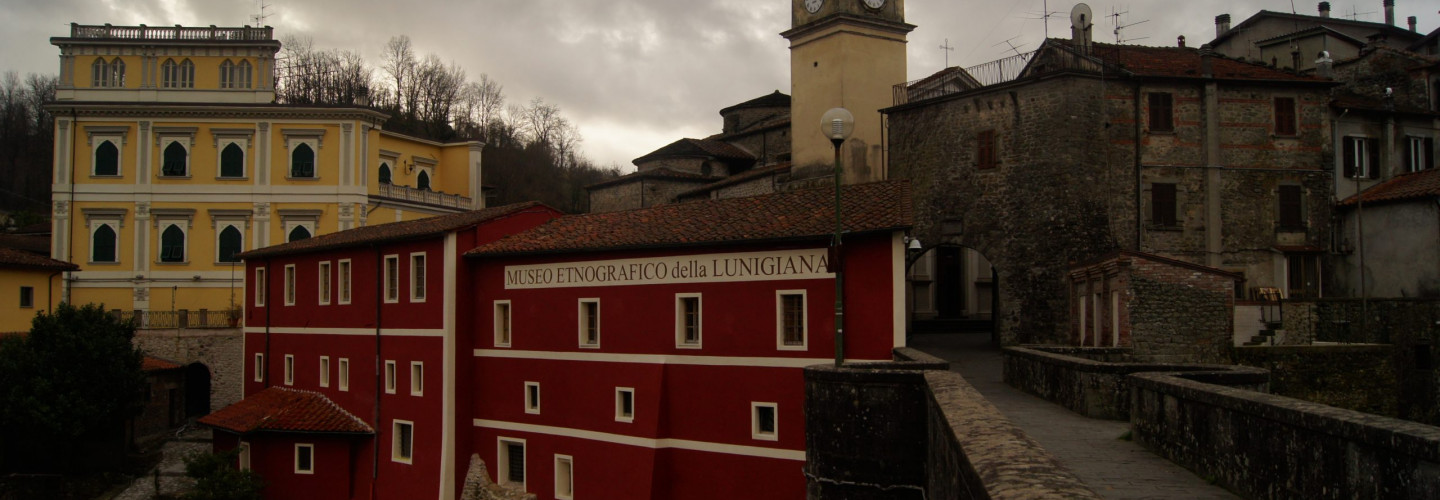
Its origin is around XII century thanks to the increasing importance of the “monte Bardone way” else “Via Francigena”
[From www.terredilunigiana.com ]
Virgoletta
In the basement of the actual tower nowadays few elements of longubard origins are present, so a prior origin is not to be excluded.
First lords of Virgoletta were Corbellari family, who were operating on behalf of Bishop of Luni and Obertenghi Marquees. Since 1221 Malaspina family will take over and divide Lunigiana into 2 areas: “Bloomed Thorn” and “Dry Thorn”. Virgoletta will be included in the second.
Its castle is mentioned right on these kind of documents (1275). Malaspina family will erect new walls 11mts high on the south of the castle and build a cistern inside the castle. In this historical moment the first houses are build on two wings along the road leading to the castle, so that the access of the castle is moved towards them.
In 1449 Galeotto Campofregoso conquers the castle and maintain it until 1471, transforming it in a residencial palace, even thou fortifying the walls outside. Then Malaspina will take over again, until 1705 when a riot of inhabitants of Virgoletta against Giovanni Malaspina aimed to aid Filippo the 5Th of Spain and french-sanish invasion. Granduke of Tuscany was able to defend against the invasion and return Virgoletta to Malaspina family: as a consequence all the rebels were sent off the castle for at least 8miles; this gives the actual shapes of the settlement. At the moment the castle is private and is slowly going through cycles of abandoning and refurbishing
Virgoletta

In the basement of the actual tower nowadays few elements of longubard origins are present, so a prior origin is not to be excluded.
First lords of Virgoletta were Corbellari family, who were operating on behalf of Bishop of Luni and Obertenghi Marquees. Since 1221 Malaspina family will take over and divide Lunigiana into 2 areas: “Bloomed Thorn” and “Dry Thorn”. Virgoletta will be included in the second.
Its castle is mentioned right on these kind of documents (1275). Malaspina family will erect new walls 11mts high on the south of the castle and build a cistern inside the castle. In this historical moment the first houses are build on two wings along the road leading to the castle, so that the access of the castle is moved towards them.
In 1449 Galeotto Campofregoso conquers the castle and maintain it until 1471, transforming it in a residencial palace, even thou fortifying the walls outside. Then Malaspina will take over again, until 1705 when a riot of inhabitants of Virgoletta against Giovanni Malaspina aimed to aid Filippo the 5Th of Spain and french-sanish invasion. Granduke of Tuscany was able to defend against the invasion and return Virgoletta to Malaspina family: as a consequence all the rebels were sent off the castle for at least 8miles; this gives the actual shapes of the settlement. At the moment the castle is private and is slowly going through cycles of abandoning and refurbishing